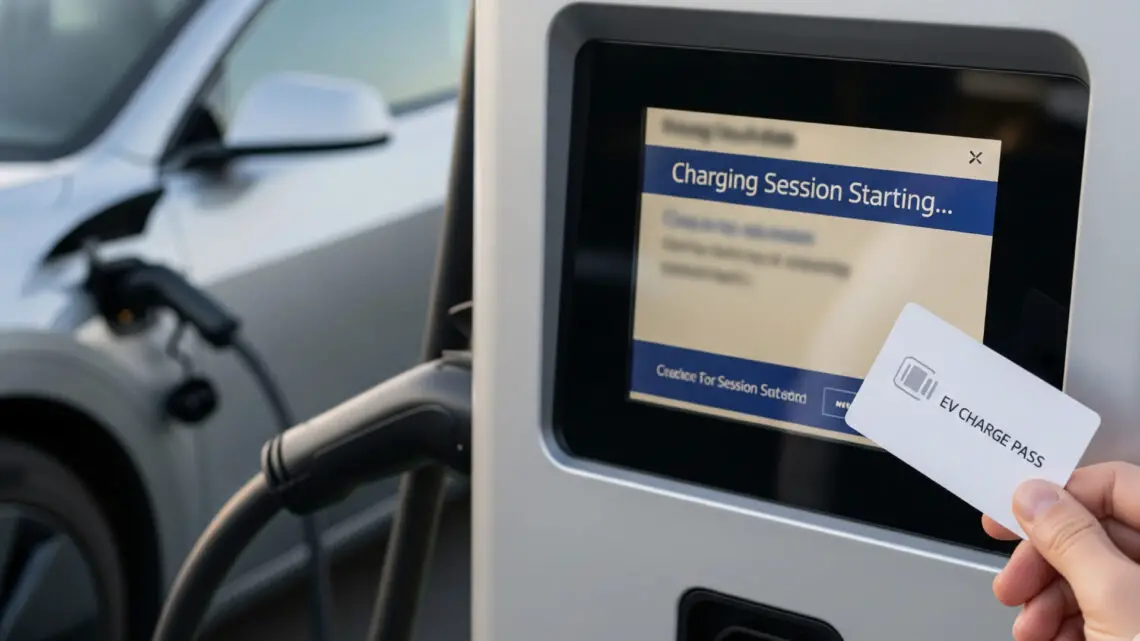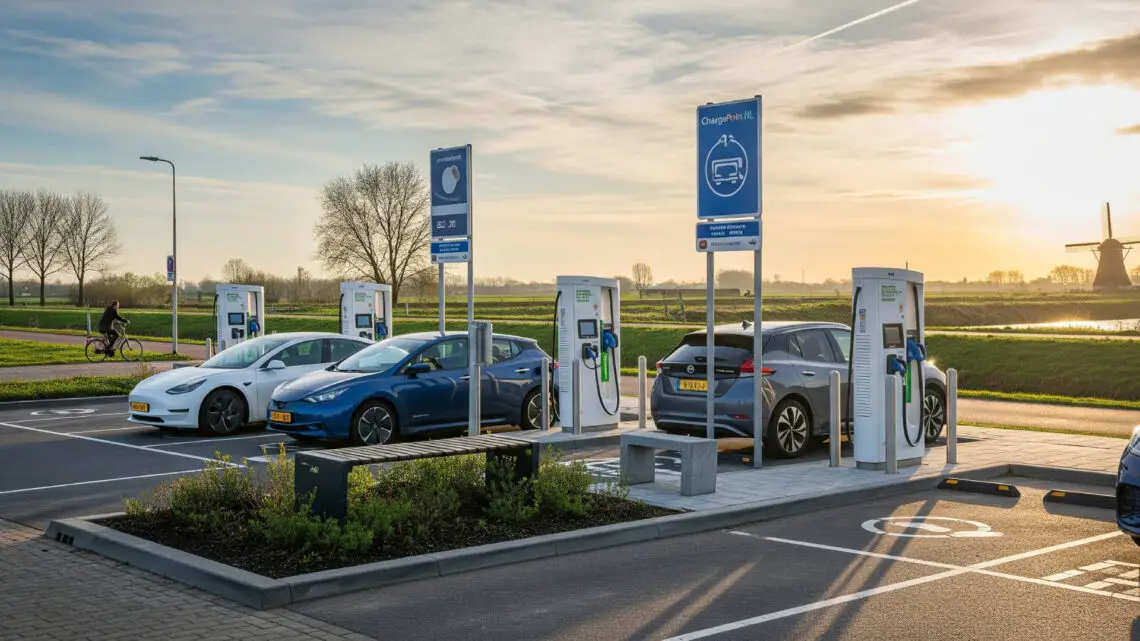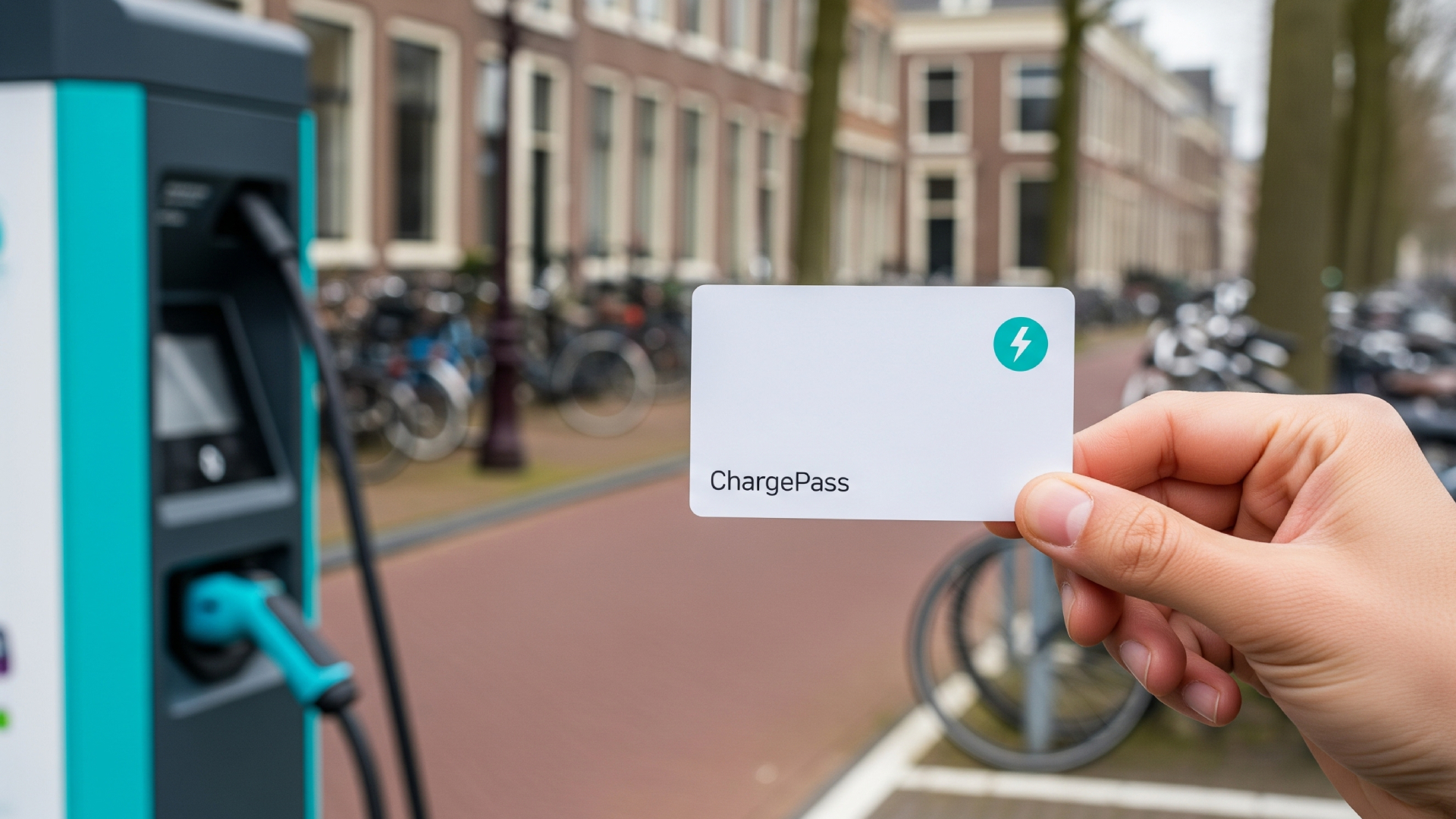Best charging pass for EV drivers
What exactly is a charging pass?
A charging card looks like a regular bank card, or is a key fob. But it works exclusively for charging infrastructure. You hold it in front of the reader at the charging station to identify yourself, and then the session starts automatically. Charging is charged automatically and you usually receive a monthly statement. In addition to physical passes, there are charging apps that do the same thing via your smartphone.
A charging card gives you access to charging stations in the Netherlands and often abroad. Providers often cooperate in so-called roaming networks. That means you can use thousands of charging stations in Europe with one card.
How do you choose the charging pass that’s right for you?
The right charging pass depends on your usage pattern. Do you primarily charge your battery at home or at work? Then a simple pass without a subscription is often enough. However, do you drive long distances and/or travel abroad regularly? Then a charge card with broad coverage is important. Want the most competitive charging rates? Compare providers carefully, because there are differences in, for example, starting rate, price per kWh and fixed costs.
Important points to watch out for are:
- Coverage of charging networks – how much and where can you charge;
- fee structure – fixed cost per month or free pass with higher kWh prices;
- roaming abroad;
- transparency of rates – some passes charge a surcharge per charging session.

Can you use all charging passes everywhere?
It’s not that you can use any charge card at all charging stations. Large networks like Allego, Shell Recharge and Fastned almost always have roaming agreements with popular providers. Still, you may have access to more charge points with one charge card than with another. For maximum flexibility, some EV drivers carry two (or more) charging passes with them, so they don’t have any quick surprises.
Are charge passes usable abroad?
Many Dutch charging cards you can also use in other European countries, such as Germany, France and Belgium. For fast charging networks along the freeway, this is often not a problem. Still, it is smart to check before departure whether your pass is accepted along your route and whether extra charges apply for international charging.
Cost structure of a charge card
The cost of charging with a charge card consists of several components:
- starting rate – a small fee per charging session
- price per kWh delivered – depending on provider and type of charge point
- fixed monthly fees – some passes are free and you charge per charging session, others work with a subscription and a lower kWh rate
- administration fees – occur with certain providers
Does it come with a subscription?
So that varies. There are free charge cards that do not require a subscription. Then you only pay for the charging itself, but at a higher charging rate. Other providers offer a charge card in combination with a subscription, with which you pay lower rates. This is particularly interesting for frequent drivers.

The best charging passes
We cannot simply assign the best charging pass. What is the best charging pass depends on your own charging needs and usage pattern. Based on coverage, ease of use and pricing structure, the following charging passes stand out:
ANWB Charge Card
The ANWB offers a charging card with no fixed fees, making it popular with occasional chargers. You pay per kWh and sometimes a starting rate. Advantage: the ANWB Laadpas offers broad coverage with access to over 900,000 charging stations in the Netherlands and abroad. With the accompanying app, you can find the cheapest charging station nearby.
Shell Recharge
Shell Recharge is one of the best known providers, with a large international network that also includes over 900,000 charging points in Europe. Handy for those who often cross borders. Also in combination with an app. Recently, provider NewMotion merged into Shell Recharge; you can link the NewMotion charge card to the Shell Recharge app.
Maingau Energy
Popular with frequent drivers and people who frequently cross the border. This German provider often offers competitive rates at fast chargers in Germany, Austria and other EU countries. Just be careful not to stay at the charger too long, as Maingau charges a penalty rate for this relatively quickly.
Vattenfall InCharge
Vattenfall offers a free charging card without a subscription that can be used at over 320,000 charging stations in the Netherlands Belgium, France, Germany, Denmark, Sweden and Norway. You pay only for the charging itself and, if you charge at a charge point not owned by Vattenfall, also a starting charge.
Fastned Gold Member
Fastned does not issue its own charge card and accepts virtually all charge cards. It does offer a Gold Member membership, which gives you significant discounted rates. With this subscription, you pay a fixed monthly fee in exchange for lower kWh prices. Ideal for those who often fast charge.

Which charging pass is most beneficial?
For occasional users, a free charge card with no monthly fee is obviously the most advantageous. For frequent drivers, on the other hand, a subscription with lower rates pays off. After all, you have to be able to get your subscription out of it. For international use, a pass with wide roaming is the best choice. So it’s important to look at your charging profile in advance: how many kWh do you charge on average per month, at home and on the road, and which countries do you frequent?
It depends on your usage pattern and charging profile
The charging card is the key to carefree electric driving. But which is best for you depends entirely on your situation: do you drive mostly locally or go much further, do you charge at home or occasionally or daily also on the road? A second charge card is a smart choice, because coverage and rates can vary from provider to provider. With the right charge card, you are guaranteed access to charge points at home and abroad, clear invoicing and control of your charging costs – and that makes electric driving a lot easier.

